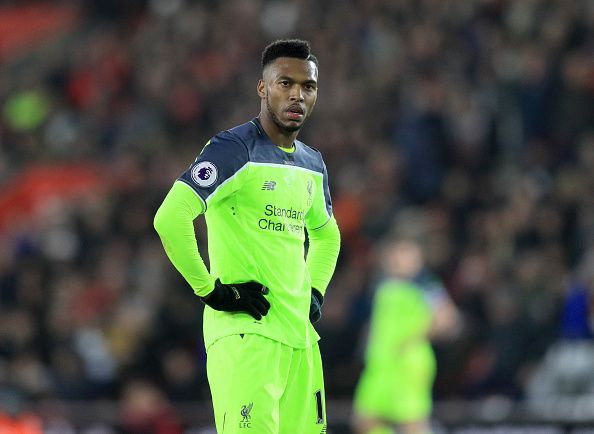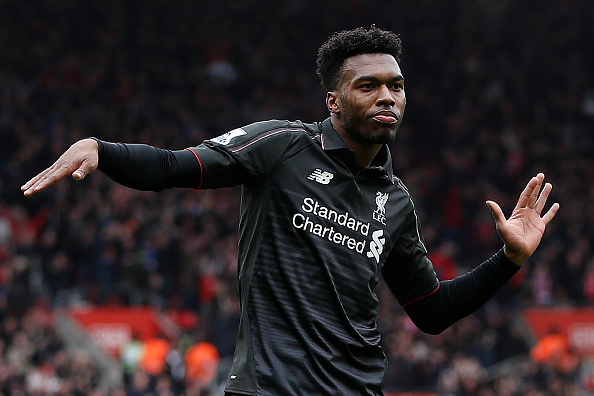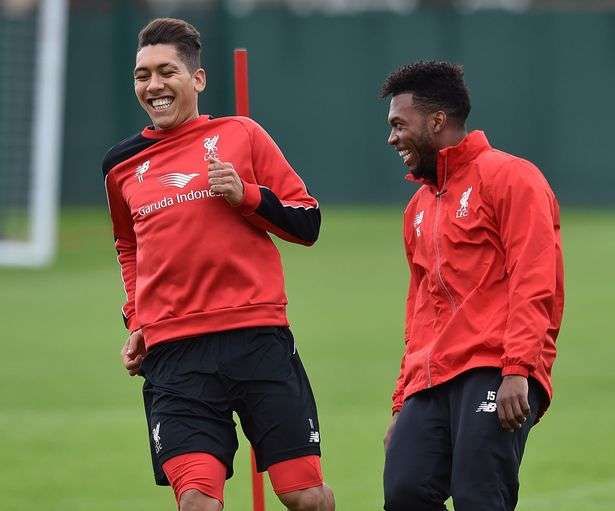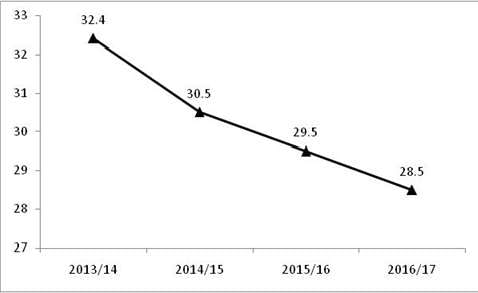
Daniel Sturridge's slump: From first-choice striker to enigmatic dilemma at Liverpool
Around three years ago at this point in time, Daniel Sturridge and Luis Suarez had teamed up to form a fearsome strike force – SAS – at Liverpool. The two propelled the Reds to an unexpected second place finish at the end of the season, and a return to the Champions League after a five-year long hiatus.
Fast forward three years and you would probably expect Sturridge to have played a crucial part in some trophy-winning campaigns for Liverpool, while being the man around whom the team was built. For, despite Suarez swapping Barcelona for Merseyside in the summer of 2014, most Liverpool fans had high hopes from their (and the league’s) second top goal-scorer of 2013/14.
Reality, though, is much farther away from these expected scenarios. While Sturridge continues to be one of the best goal-scorers in the PL, his injury record has proven to be a nightmare for both player and club.
We take a look at what went wrong for the 27-year-old and the resultant decline in his form and fortune – both right now and over the past couple of seasons.
2013/14: a breakout season
Sturridge scored 22 goals in the Premier League and assisted a further nine, as he and team-mates Suarez, Sterling, Coutinho and Gerrard set the competition alight.
Liverpool began the season sans fireworks but once their attackers and formations began to click, there was no stopping their march. A tilt at the title was ruined by a defeat to Chelsea at Anfield but the Reds finished as runners-up – something truly unexpected of them at the start of the season.
Suarez won most of the accolades that season – and rightly so, but Sturridge had announced his entry and how! The former Manchester City and Chelsea player, whose career did not take off at either clubs, was one of the most sought-after forwards and certainly England’s best finisher.
A natural striker of the ball with a wonderful eye for goal, his runs in behind the defensive line and a telepathic understanding with Coutinho was a sight to watch and continues to be so.
Injury nightmare – two-thirds of the time in exile
Liverpool’s return to the Champions League in 2014/15 was met with huge anticipation. Undoubtedly, the Reds would a certain Uruguayan, but they still had sufficient firepower in Sturridge, the rest of the old team and a bunch of new signings.
What happened next was unforeseen, though.
The Reds’ hopes in the league and Europe came crashing down as Sturridge continued to be dogged by injuries all through the season. He missed a total of 26 league games due to various injuries – thigh strains, hip injuries, hamstring strains and so on.
In all, he managed to feature for just 749 minutes for the Reds in the league, scoring four goals and assisting two more – an extremely disappointing turnaround compared to his previous season’s returns. His strike rate was a paltry 0.33 vs. a stellar 0.76 in 2013/14 in the league fixtures.
Also read: How Jurgen Klopp can drag Liverpool out of their mini crisis
His fitness or the lack of it, ensured that he did not feature in the Champions League at all, a shame given the calibre and quality of the striker.
This was also the season where Sturridge’s mentality was beginning to be doubted, with questions asked of his willingness to push himself.
2015/16: Klopp, more injuries and Firmino
The following season was not much different with respect to the striker’s tryst with injuries.
A hip injury in the middle of the calendar year proved to be a massive deterrent at the start of his season, followed by knee and then hamstring troubles. It restricted his league outings to just 14 across the season.
In the meantime, Liverpool went through a tumultuous time as the squad performed below expectations at the start. With the team placed a lowly eighth in the table, Brendan Rodgers was replaced by Jurgen Klopp as the head coach in October 2015.
The German’s arrival proved to be a turning point for the club as he led them to two cup finals. However, Sturridge missed the group stages of the Europa League and was out for a month following the arrival of Klopp. He rarely featured in the FA Cup and League Cup; most fixtures were during a hectic period when he was under treatment.
Although he made the squad for three games in November, he was used sparingly and barely made an impact before crashing out for the next two months due to another extended injury layoff.
A talented and potentially world-class player but one who has spent 50 out of 76 league games on the sidelines - Klopp must have realised the need to adapt the squad without depending entirely on Sturridge and that proved to be the game-changer.
Roberto Firmino was the chosen man in the centre and even the 27-year-old’s return to fitness could not displace the former Hoffenheim man from the squad.
The summer of 2016 saw supporters’ opinions divided down the middle regarding their star front-man – while one section called for his head owing to minimal returns on the extent of investment (time and wages), the other backed him on account of his undeniable quality in front of goal.
2016/17: decline in form and pace
The centre-forward is definitely a poacher and fantastic goal-scorer but there is also no shying away from some facts. He has stayed relatively injury-free this season but at one point, even Divock Origi was picked ahead of him.
Sturridge has 13 appearances in the current season but the sum total of minutes played is 520, i.e., barely six full games, at an average strike rate of 0.15 and 260 minutes per goal scored. Neither stat makes for very pleasant reading as it is of a player who was often compared to Fernando Torres and his exemplary strike record at Liverpool.
He started off brightly in the League Cup campaign scoring four goals (two braces each against Burton Albion and Spurs) as Liverpool cruised to the semi-final stages.
Also read: Klopp confident Sturridge will recapture best form
A trophy could have been within touching distance but the Englishman failed to bury a couple of good chances, especially in the return leg against the Saints at Anfield, resulting in the Reds crashing out of the competition.
Apart from an evident decline in the number of goals scored, what stands out is the player’s performance. His finishing prowess is still undoubted but the lack of pace and acceleration is as obvious as sunlight during the day.
Recent statistics prove this point – his average top speed of 32.4km/hr during the 2013/14 season has only decreased through the course of the years, and is currently at about an average of 28.5km/hr in 2016/17.
The sprints, those runs he makes in behind a blindsided defensive line have been hard to come by. That may have been a consequence of a change in formation and personnel as well, but it is the player’s style, speed, strength and marksmanship that has gone completely off the boil.
The numbers back the point
Sturridge averaged 0.62 goals per game in the Premier League prior to the start of the 2016/17 season at a rate of 118 minutes per goal. That figure has deteriorated to 0.53 and a minutes-to-goal ratio of 126.
While the 27-year-old did partially recover his mojo in the 2015/16 season, the drop in the pecking order at Liverpool shows how marked his decline has been.
| Games | Goals | Strike Rate | Mins per goal | |
| 2013/14 | 29 | 22 | 0.76 | 104 |
| 2014/15 | 12 | 4 | 0.33 | 187 |
| 2015/16 | 14 | 8 | 0.57 | 123 |
| 2016/17 | 13 | 2 | 0.15 | 260 |
| All seasons | 68 | 36 | 0.53 | 126 |
Accounting for all competitions, Sturridge’s strike rate remains constant at 0.52 before the onset of the current season as well as including it. The minutes to goal ratio has suffered slightly, going up to 133 vs. 130 excluding 2016/17.
| Games | Goals | Strike rate | Mins per goal | |
| 2013/14 | 33 | 25 | 0.76 | 107 |
| 2014/15 | 18 | 5 | 0.28 | 243 |
| 2015/16 | 25 | 13 | 0.52 | 131 |
| 2016/17 | 19 | 6 | 0.32 | 153 |
| All seasons | 95 | 49 | 0.52 | 133 |
These numbers are not picked and chosen to highlight Sturridge’s ineffectiveness. It is presented to showcase how his impact has reduced and how much that cutting edge and sharpness of a frontman is immensely missed.
Sturridge would have been any manager’s dream option when fit and firing; while on song, Mane’s absence and Origi’s lack of form might not have come at such a high cost for the Reds, if only they could rely on ‘Dan the man’.
Sadly, however, that has not been the case and Liverpool’s hopes for a trophy have been all but crushed as a consequence of crashing out of the League Cup and FA Cup this week.
Bottom Line
Daniel Sturridge’s stint in Merseyside got off to a dream start before stuttering and stumbling owing to injury-marred absences.
His presence in the squad is influential and acts as a confidence booster, given his inimitable quality, but the fact that his form and the player himself is no longer what he was is a fact – difficult to digest, yes, but something fairly evident.



